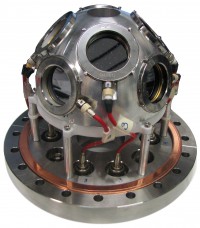Lab below ground unearths vital clues about make-up of stars

A new experiment carried out in the underground Gran Sasso Laboratory of the Italian National Institute for Nuclear Physics (INFN) could help scientists uncover the origin of some rare elements in the universe.
Nuclear fusion reactions provide the source of energy that makes stars shine. Like gigantic alchemists of the cosmos, they also create new elements from the hydrogen and helium left over by the Big Bang.
Understanding the complex pattern of reactions that leads to the abundances of elements and isotopes that we observe today requires detailed models of stellar evolution and extensive laboratory experiments on individual nuclear reactions. For some time, astronomers have been puzzled by anomalous abundances of rare isotopes of carbon, nitrogen, and oxygen in the atmospheres of some stars and in tiny grains that reach the Earth inside meteorites. In particular, the amount of oxygen-17 – a rare, heavier form of the oxygen we breathe – observed in some red giants and massive stars can provide important clues on the mixing processes that occur inside these stars and bring to their surfaces the debris of nuclear reactions. By measuring the tiny particles released by the fusion of hydrogen and oxygen-17, the study – published in the journal Physical Review Letters – reveals that oxygen-17 is destroyed twice as fast as previously expected: a result that may help reconcile the puzzling abundances observed in stellar atmospheres and stardust grains.
The experiment, which took place at the LUNA (Laboratory for Underground Nuclear Astrophysics) accelerator of the Gran Sasso Laboratory, detected the feeble signals of the fusion reaction with unprecedented precision. Such studies can only be performed in the absence of radiation from space, and the shielding provided by the 1.4km of rock under the Gran Sasso mountain is ideal to suppress the background induced by cosmic rays.
LUNA is an international collaboration of about 40 scientists from the INFN (Italy), the Helmholtz-Zentrum Dresden-Rossendorf (Germany), MTA-ATOMKI (Hungary) and the School of Physics and Astronomy of the University of Edinburgh (UK).
The UK team, led by Professor Marialuisa Aliotta, played a key role in the planning and execution of the experiment and provided the detectors and related instrumentation.

